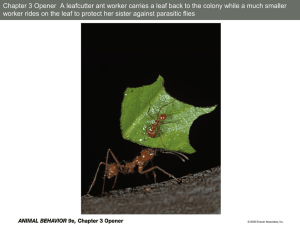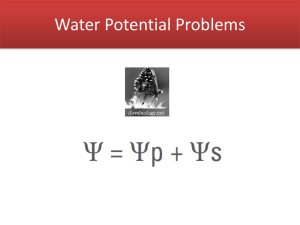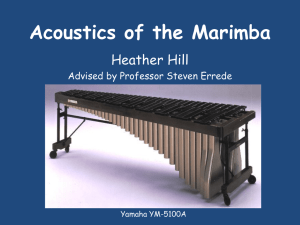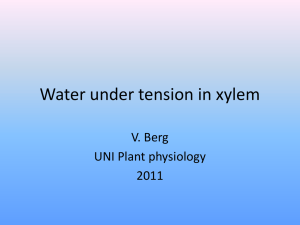Channel Pattern-2011
advertisement
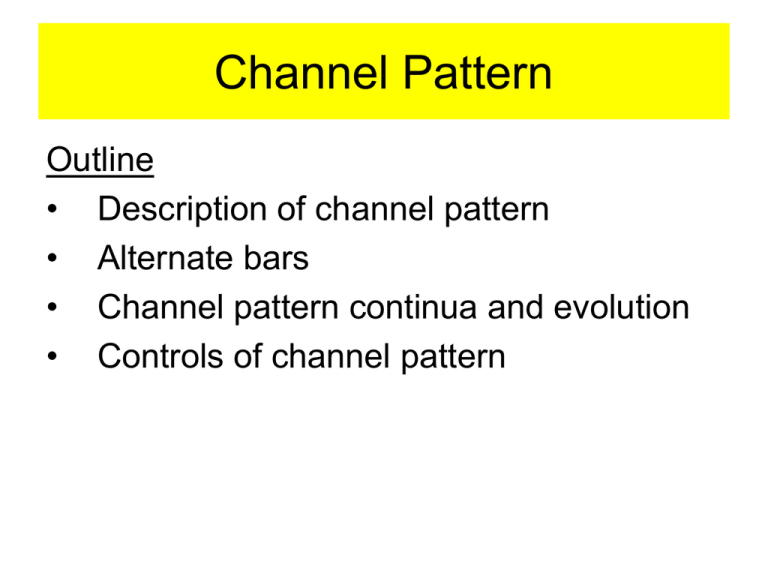
Channel Pattern Outline • Description of channel pattern • Alternate bars • Channel pattern continua and evolution • Controls of channel pattern Description of Channel Pattern • Defined by the nature of channel splitting around braid bars or islands, and the sinuosity of channel segments Single channels of varying sinuosity • Straight • Meandering Multiple channels of varying sinuosity • Braided • Anastomosed • Since patterns can be flow dependent, should be described at some intermediate flow stage Channel Types (Thorne et al., 1997) Bridge (2003) 1. Bed evolves towards a statistically constant geometry composed of alternate bars 2. Channel responds to alternate bars by inducing bank erosion and channel widening 3. Bed adjusts to sediment fluxes and thalweg wanders For single - row alternate bars and Fr 0.8; Fr u Alternate Bars 5 wd C f H b d 1.51C f w d 1.45 for 6 w d 40 C f gdS u 2 u* u 2 (Ikeda, 1984) gd Alternate Bars Alternate bars in the Naka River, an artificially straightened river in Japan. Image courtesy S. Ikeda. Alternate Bars Alternate bars in a flume in Tsukuba University, Japan: flow turned low. Image courtesy H. Ikeda. Alternate bars in the Rhine River between Switzerland and Lichtenstein. Image courtesy M. Jaeggi. Alternate Bars Tokachi River, Japan Channel Response to Alternate Bars • As water level drops, highest parts of the bars become emergent • Bar tail, riffle, and head become recognizable • Cause localized flow diversions, and localized erosion and deposition • Deposition on convex banks inside of river bend point bars • Deposition in mid-channel braid bars (Schumm and Khan, 1972) Single-row alternate bars (Point bar, Madison River, MT) (Bridge, 2003) (Bar tail, River Feshie, Scotland) (Unit bars, P. Ashmore) Double-row alternate bars (Braid bars, Saksatchewan River, CAN) (Bridge, 2003) (Braid bars, P. Ashmore) Double-row alternate bars (Braid bars, Sunwapta River, CAN) (Bridge, 2003) (Braid bar, Sagavanirktok River, AK) Channel Pattern • Defined by the nature of channel splitting around braid bars or islands and the sinuosity of channel segments Single channels • Straight • Meandering Multiple channels • Braided • Anastomosed Channel Description • Sinuosity channel thalweg length Sn valley length • Braiding index mean number of active channels or braid bars BI cross sectional transect Controls on Channel Pattern Conceptual (Knighton, 1998) Controls on Channel Pattern Braudrick & Dietrich (2009) hypothesize that meandering rivers also require: 1) bank strength from either cohesive material or vegetation, 2) overbank flows to attach bars to their floodplains, 3) fine sediment to fill the downstream end of bars and chutes. http://www.berkeley.edu/news/media/releases/2009/10/05_meanders.shtml Ingredients: (1) vegetation to reinforce banks and prevent erosion, and (2) sand to build point bars and block off cut-off channels and chutes Controls on Channel Pattern S Q-b Braided Meandering (Bridge, 2003) Controls on Channel Pattern Braided S Q-bDc (Bridge, 2003) Controls on Channel Pattern w D50b Braided Meandering (Bridge, 2003) Controls on Channel Pattern Parker (1976) using channel stability theory Braided S d ; meandering stable Fr w S d ; braiding stable Fr w Meandering (Bridge, 2003) Channel Pattern and Stream Restoration • Bed topography and flow redirection are the primary controls on channel pattern, as conditioned by boundary composition • Indices can be used to facilitate design of stable stream patterns, though these must be combined with sediment transport relationships Channel Pattern Conclusions • Alternate bars play an important role in the evolution of straight channels • Channel pattern defined by channel splitting around bars and the sinuosity of channel segments • Discharge, slope, sediment load, etc., all interact with river flow to modify channel pattern

